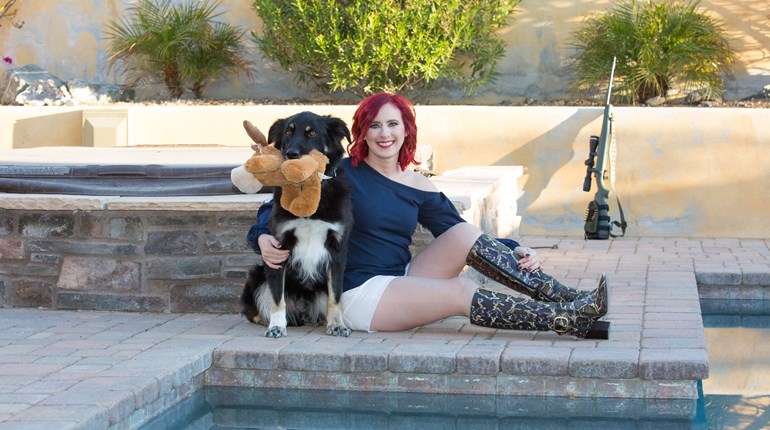
More than 40 years ago, my young bride and I car-camped our way across America for five weeks using a smelly, hot canvas tent, a lantern and cook stove that leaked propane fuel, and air mattresses designed more for swimming than sleeping—and yeah, they leaked, too. After our two sons were raised and left the nest, we got back into car-camping about a decade ago, purchasing all new gear. Oh, what a difference 30 years makes! We’re continually upgrading our kit, and with the quality of modern, high-tech camping gear available today, comfort and convenience levels are almost that of an inexpensive motel—without the motel cost!
If you are unfamiliar with the term, car-camping is simply using a vehicle—car or pickup truck—to transport your camping gear from one drive-up campsite to another. When backpacking, you are very limited in the amount and kind of gear you can take on a camping trip. Not so with car-camping. More and heavier gear is easily transported, which translates into increased convenience and comfort, not the least of which is better food!
What it costs
When my wife and I retooled, we purchased a new three-room nylon tent, two sleeping cots, two air mattresses, two folding camp chairs, a portable stove/grill, a complete portable kitchen, lantern, plastic food storage containers and a cooler for around $1,000. Today’s costs are similar. How long would it take two people on vacation to spend $1,000 on motels and restaurant food? Not long. And camping gear is an investment in the future: The more you use it, the more economical it becomes.
All the equipment listed above fits neatly—as in below window level—into our mini-van. In addition to camping we like to go fishing, too, so that leaves room for trailering a boat rather than towing a travel trailer or pop-up camper.
Before you leave
One thing to remember to do before car-camping for the first time with all your new gear is to set it up outside at home to make sure it all works properly and you know how to use it. This important step allows the luxury of actually reading direction sheets and instruction manuals without the threat of a thunderstorm looming overhead or darkness coming on. As you do this, make a list of the extra equipment you think you will need, such as a hammer to drive and pull tent stakes, a small broom to sweep out the tent before repacking it, a plastic jug for carrying water, cooking and eating utensils, a five-gallon plastic bucket with a lid, rope for a clothesline, etc. Some of these small items can simply be purchased at discount stores, while others are found more cheaply at yard sales.
Choosing a campsite
After arriving at a campground, there are little things about choosing a specific campsite that will make a big difference in the comfort of your night’s stay. This may seem like a no-brainer, but the farther your campsite is located from the main highway the quieter it will be. That sounds elementary, but living within four walls most of the time we forget that tents are not good sound barriers. Also, take the time to select a level campsite—at least it should be level where you place your tent. I can say from firsthand experience that trying to sleep even slightly uphill or downhill is no fun. And think ahead to inclement weather. If it rains, where will most of the water drain? If it’s under your tent, you’ve chosen poorly.
Attitude adjustment
And finally, relax. Camping is supposed to be a leisure activity. If you approach it at the same pace most people do modern living, you probably won’t enjoy it much. So leave plenty of time between scheduled activities for just doing nothing. Or better yet, throw away your schedule and take each day as it comes. Likely, some of your best car-camping memories will happen during serendipitous times, especially if you have kids or grandkids in tow.
One last advantage of car-camping as opposed to staying in motels as you travel is the simple pleasure of getting to meet new, interesting people. Most of those who are willing to put the time and effort into camping are down-to-earth outdoorsmen and women who enjoy sharing a campfire and a little conversation.
So if you want to make a few new friends—or you just want to reconnect with your own family—give car-camping a try. If nothing else, the money you’ll save compared to staying in motels and eating at restaurants will be worth the effort.
A Basic Car-Camping Equipment List:
- Tent (with extra tent stakes)
- Propane stove
- Sleeping cots
- Air mattresses
- Air pump
- Sleeping bags or bedding
- Pillows
- Propane lantern
- Cooking and eating utensils
- Portable kitchen (optional)
- Extra propane canisters
- Cooler(s)
- Water jug
- Tarp
- Flashlights/headlamps
- Hammer (for driving/pulling tent stakes)
- Sewing kit
- Small broom
- Bucket
- Folding camp stools or chairs
- Tool box (small)
- Rope (for a clothesline and other uses)
- A few clothes pins or metal hangers for drying wet clothes
- Clothes (with an extra pair of shoes, boots, or sandals)
- Food
- Instruction booklets for equipment
- Matches
- Camera
- Binoculars
- Reading/writing material
- Hand axe or small saw
- Toilet paper
- First-aid kit
- --and last but certainly not least, a roll of duct tape!







































